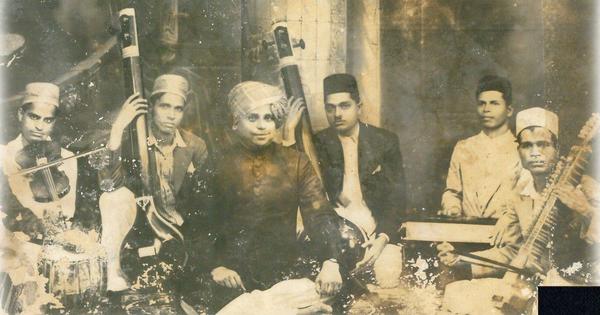Vyas’s innovative use of technology transformed Hindustani music and set new recording standards in the 20th century.
Narayanrao Vyas, born in 1902 in Kolhapur, emerged as a groundbreaking figure in Hindustani classical music during the early 20th century. This period was marked by a reluctance among many musicians to embrace new technologies. In contrast, Vyas adopted recording innovations that helped bring classical music into the homes of millions. His remarkable achievements were acknowledged when the Gramophone Company of India awarded him a gold medal in 1935, signifying his extraordinary impact on the music industry. By breaking sales records for 78 RPM discs, he established himself as a recording superstar in Hindustani music.
Throughout his career, Vyas recorded nearly 150 shellacs, a testament to his prolific output and enduring popularity. His son, vocalist Vidyadhar Vyas, highlights the significance of his father’s legacy through the recent publication of Gayanacharya Pandit Narayanrao Vyas Smriti Granth, a compilation of essays and interviews celebrating his father’s life and art. Vyas’s talent extended beyond performance; he played a crucial role in the founding of Bombay Radio in 1927, alongside other notable artists like Balgandharva and Sundara Bai. Vidyadhar notes that while many classical musicians were hesitant to utilize recording technology, Vyas effectively leveraged it to broaden his audience.
Vyas’s musical journey began with his first album released in 1929, which featured a bandish in raga Adana and a popular bhajan, Shyam Sunder Madan Mohan. The success of this album marked the beginning of his ascent to fame, as several subsequent albums also resonated with listeners. His distinctive voice, swift style, and extensive repertoire—encompassing khayal, tarana, thumri, and bhajan—allowed his music to reach audiences far and wide, facilitated by various recording devices. He was known for his stylish appearance, often seen dressed impeccably in jackets and turbans, and he even organized his own concert in Pune’s Kirloskar Theatre in 1930, where ticket prices ranged significantly.
What set Vyas apart from his contemporaries was his ability to condense complex musical forms into three-and-a-half-minute tracks. His approach made ragdari music more accessible while maintaining its essence. Despite being part of a recording revolution that included artists like Gauhar Jaan and others, Vyas stood out by masterfully abridging the khayal universe of the Gwalior gharana. Musicians faced the challenge of delivering precise performances within strict time limits, adding pressure to the recording process. Vocalist Madhup Mudgal acknowledged that Vyas’s recording of Gaud Malhar was considered a near-perfect representation of the raga, showcasing his exceptional skill.
While it would be reductive to label Narayanrao Vyas merely as a recording phenomenon, his contributions to Hindustani classical music were profound. As a disciple of the influential reformer Vishnu Digambar Paluskar, Vyas experienced a transformative era in Indian classical music. His adaptability to the changing landscape of music, coupled with his innovative spirit, allowed him to package his art in a way that resonated with contemporary audiences. The Vyas family’s musical journey began in a culturally rich environment, and with Paluskar’s guidance, they ventured into a new educational system that emphasized structured learning and performance. Ultimately, Narayanrao Vyas’s legacy remains a vital part of India’s rich musical heritage.








